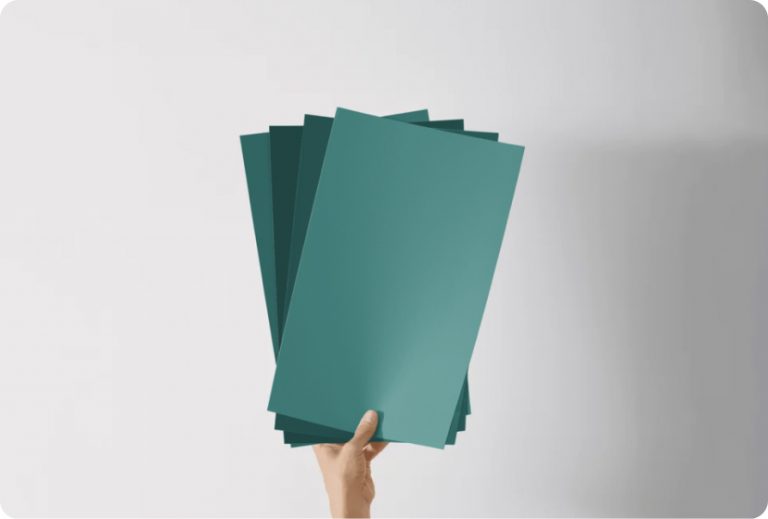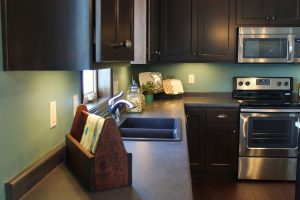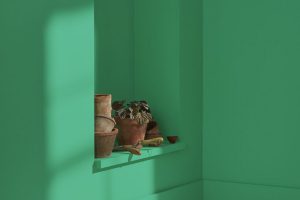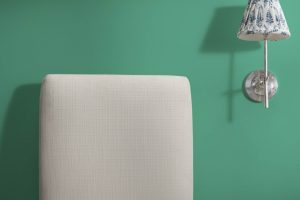Colors have the power to transform spaces, elicit emotions, and set the ambiance of a room. Amongst the spectrum of colors, there is one hue that has gained attention for its versatile nature and calming vibe: Turtle Green 2142-20.
In this article, we delve deep into this fascinating color and shed light on its characteristics, undertones, and complementary shades.
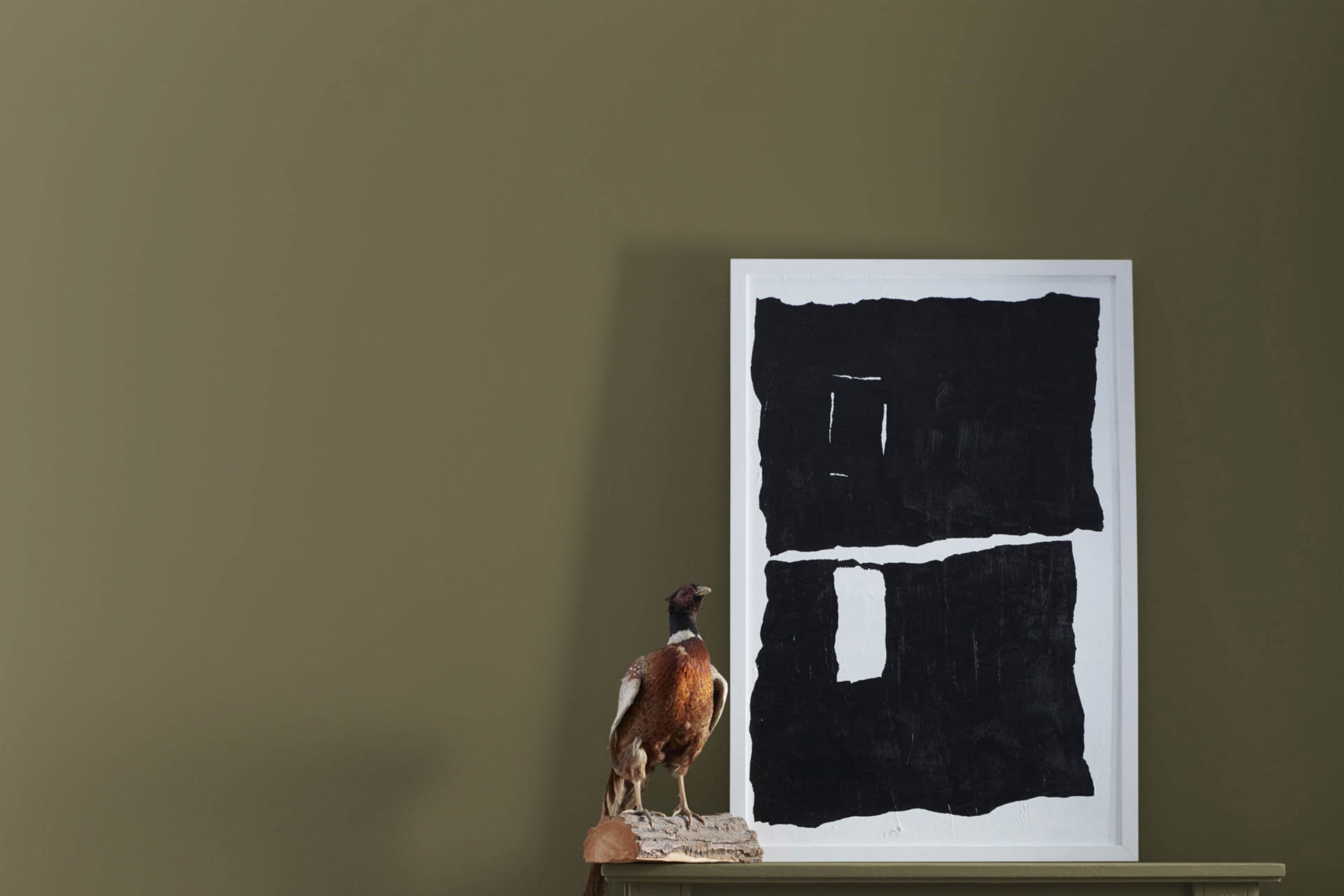
What Color Is Turtle Green 2142-20?
Turtle Green 2142-20 is reminiscent of a quiet forest glade. The hue borrows from the lush depths of nature, evoking the cool shade under a canopy of leaves. It’s a mid-tone green that is both sophisticated and earthy.
Perfect for contemporary, rustic, and coastal interiors, Turtle Green shines when paired with natural materials like wood, jute, and cotton. The color also complements metallic accents, especially those in muted gold or brushed silver.

Ever wished paint sampling was as easy as sticking a sticker? Guess what? Now it is! Discover Samplize's unique Peel & Stick samples.
Get paint samples
Is It a Warm Or Cool Color?
Turtle Green 2142-20 leans towards the cooler spectrum of colors. Its refreshing undertones are reminiscent of the shade you’d find in serene woodland. In homes, cool colors are known for promoting calmness and creating a soothing environment, and Turtle Green is no exception.
This cooling effect makes it an excellent choice for bedrooms or studies where relaxation and concentration are paramount.
Undertones of Turtle Green 2142-20
Undertones subtly influence the main hue and can dramatically shift the perception of a color. Turtle Green 2142-20 exhibits undertones of blue and gray, giving it a mossy, earthy feel. On interior walls, these undertones allow the color to seamlessly blend with both vibrant and muted palettes, making it highly adaptable.
The bluish undertone lends a hint of sophistication, while the grayish touch provides versatility.

Coordinating Colors of Turtle Green 2142-20
Coordinating colors enhance and contrast the primary hue, providing depth and dimension to a space. For Turtle Green, the following coordinating colors stand out:
- OC-125 Moonlight White – A soft, ethereal white with a touch of gray.
- OC-45 Swiss Coffee – A creamy, delicate white with beige undertones.
- BM 2143-50 Old Prairie – A dusty lavender, nostalgic and soothing.
- AF-455 Croquet – A light sage green, calming and earthy.
Additional colors that coordinate well include a sandy beige (CSP-155 Skipping Stone ), a muted coral (BM 2170-40 Coral Spice ), and a soft sky blue (BM 807 Soft Sky ).

How Does Lighting Affect Turtle Green 2142-20?
Lighting profoundly influences color perception. In artificial light, Turtle Green may seem deeper and more saturated, whereas natural sunlight can illuminate its cool undertones. For north-facing rooms, which get cooler, softer light, the green will appear more muted. South-facing rooms bathe Turtle Green in warm light, accentuating its depth.
In east-faced rooms, morning light can give it a bright, fresh look, while west-facing rooms during sunset can lend it a cozy, dusky appearance.

LRV of Turtle Green 2142-20
Light Reflectance Value (LRV) indicates how much light a color reflects. With an LRV of 12, Turtle Green is on the darker side, meaning it absorbs more light than it reflects. This can make spaces seem cozier and more intimate.
In larger rooms, it offers a feeling of warmth, while in smaller spaces, it provides a snug ambiance.

LRV – what does it mean? Read This Before Finding Your Perfect Paint Color
Trim Colors of Turtle Green 2142-20
Trim colors create definition and highlight architectural details. For Turtle Green, shades of white, especially those from the same brand, are ideal. A crisp, clean white like OC-57 White Heron offers a stark contrast, making the green pop, while a creamy white like BM 2034-60 Light Pistachio complements its earthy undertones.

Colors Similar to Turtle Green 2142-20
It’s beneficial to know analogous colors when planning a palette. While Turtle Green is unique, similar hues like BM 518 Sterling Forest (a deep, verdant green), BM 1505 Trailing Vines (a grayish-green), and BM 1526 Evening Grove (a muted forest green) offer alternatives with subtle differences.

Colors That Go With Turtle Green 2142-20
Pairing complementary shades creates harmonious interiors. Benjamin Moore offers a range of colors that beautifully match Turtle Green, such as:
- BM 233 Cream Fleece
- BM 2172-20 Mars Red
- CSP-155 Skipping Stone
- CC-34 Jester
- BM 189 Morgan Hill Gold
- BM 187 Goldfinch
- BM 2082-10 Chestnut
Each of these shades provides a distinct backdrop, ensuring Turtle Green remains the star while creating a cohesive interior setting.

How to Use Turtle Green 2142-20 In Your Home?
Turtle Green 2142-20, with its calming and sophisticated aura, is versatile enough for various rooms. It’s perfect for bedrooms, inducing serenity and relaxation. Bathrooms benefit from its spa-like ambiance, while living rooms adorned with this shade exude warmth and coziness. This shade is even robust enough to grace exteriors, adding a touch of nature to home facades.
Given the rise of green kitchens, Turtle Green has found its way onto cabinets and backsplashes, presenting a fresh and modern culinary space. Stylistically, it complements contemporary, rustic, coastal, and even Scandinavian interiors, making it a dynamic choice for homeowners.
Turtle Green 2142-20 in the Bedroom
The bedroom, a sanctuary of rest, welcomes Turtle Green’s calming influence. Paired with neutral beddings, wooden furniture, and soft lighting, this shade can foster an environment conducive to rest and rejuvenation. Its cool undertones help soothe the senses, making it an ideal backdrop for winding down after a long day.

Turtle Green 2142-20 in the Bathroom
For a spa-like ambiance, Turtle Green in the bathroom is a fantastic choice. Coupled with white fixtures, natural stone surfaces, and plants, this color evokes a serene environment perfect for relaxing baths. The hue balances modern aesthetics with an organic touch, turning ordinary bathrooms into personal retreats.

Turtle Green 2142-20 in the Living Room
The living room, a space of gathering and conversation, is uplifted with Turtle Green. It pairs wonderfully with neutral couches, earthy decor, and metallic accents. Whether you’re aiming for a contemporary vibe or a rustic charm, this shade provides a comforting backdrop that’s both chic and inviting.

Turtle Green 2142-20 for an Exterior
On exteriors, Turtle Green 2142-20 brings a touch of the forest to urban dwellings. It works harmoniously with stone pathways, wooden accents, and landscaped gardens. For homes nestled in natural surroundings, this shade integrates seamlessly, offering a subtle yet striking presence that stands the test of time.

Turtle Green 2142-20 in the Kitchen
Modern kitchens embrace green as a refreshing departure from standard whites and grays. Turtle Green, on kitchen walls, infuses a vibrant yet calming energy. Paired with white countertops, stainless steel appliances, and wooden details, it crafts a space that’s both trendy and timeless.

Turtle Green 2142-20 on the Kitchen Cabinets
For those seeking a bold kitchen statement, Turtle Green 2142-20 cabinets are a game-changer. They serve as a vibrant focal point, especially when contrasted with lighter walls or marble countertops. Hardware in brushed gold or black adds the finishing touch, transforming the kitchen into a culinary masterpiece.

Turtle Green 2142-20 With Other Colors
It’s essential to compare colors to understand their unique characteristics and how they relate to each other. Comparing hues can help in making informed decisions about color schemes, creating balanced palettes, and achieving the desired ambiance in spaces.
It’s not just about individual colors but how they harmonize, contrast, or set moods when placed side by side. Let’s delve into how Turtle Green 2142-20 fares against six other shades.
Turtle Green 2142-20 vs. BM 2142-70 Icicle
Icicle is a fresh, almost ethereal shade that breathes an airy quality. In contrast, Turtle Green is more grounded and earthy. While Icicle evokes a frosty morning, Turtle Green conjures images of a dense forest. Together, they can create a dynamic balance of cool and warm, light and deep.

Turtle Green 2142-20 vs. BM 2142-60 November Rain
November Rain is a muted, soft green-gray that oozes calm and subtlety. Turtle Green, being bolder, offers a more assertive statement. While November Rain works as a gentle background hue, Turtle Green stands out, making it the focal point. They both channel nature but in varying intensities.

Turtle Green 2142-20 vs. BM 2142-10 Mediterranean Olive
Mediterranean Olive is a deeper, more olive-toned hue. It’s rich, while Turtle Green leans towards a fresher palette. If Turtle Green is a forest canopy, then Mediterranean Olive is the shadowed underbrush. They’re both evocative of nature, but Mediterranean Olive is duskier and more mysterious.

Turtle Green 2142-20 vs. BM 2142-30 Mountain Moss
Mountain Moss , as the name suggests, is reminiscent of moss-covered mountain rocks. It’s a shade deeper than Turtle Green and carries a stony undertone. While both are deeply rooted in nature, Turtle Green has a broader appeal, and Mountain Moss feels more niche and rugged.

Turtle Green 2142-20 vs. BM 2142-40 Dry Sage
Dry Sage is a muted green with beige undertones. It’s softer and can be perceived as more neutral compared to the vividness of Turtle Green. While Turtle Green makes a statement, Dry Sage seamlessly blends, making it perfect for backgrounds or to complement bolder colors.

Turtle Green 2142-20 vs. BM 2142-50 Gray Mirage
Gray Mirage is a grayish-green that exudes a vintage charm. It’s more muted than Turtle Green and can be seen as its older, more sophisticated sibling. They share the same green family but diverge in mood, with Gray Mirage being more subdued and elegant.
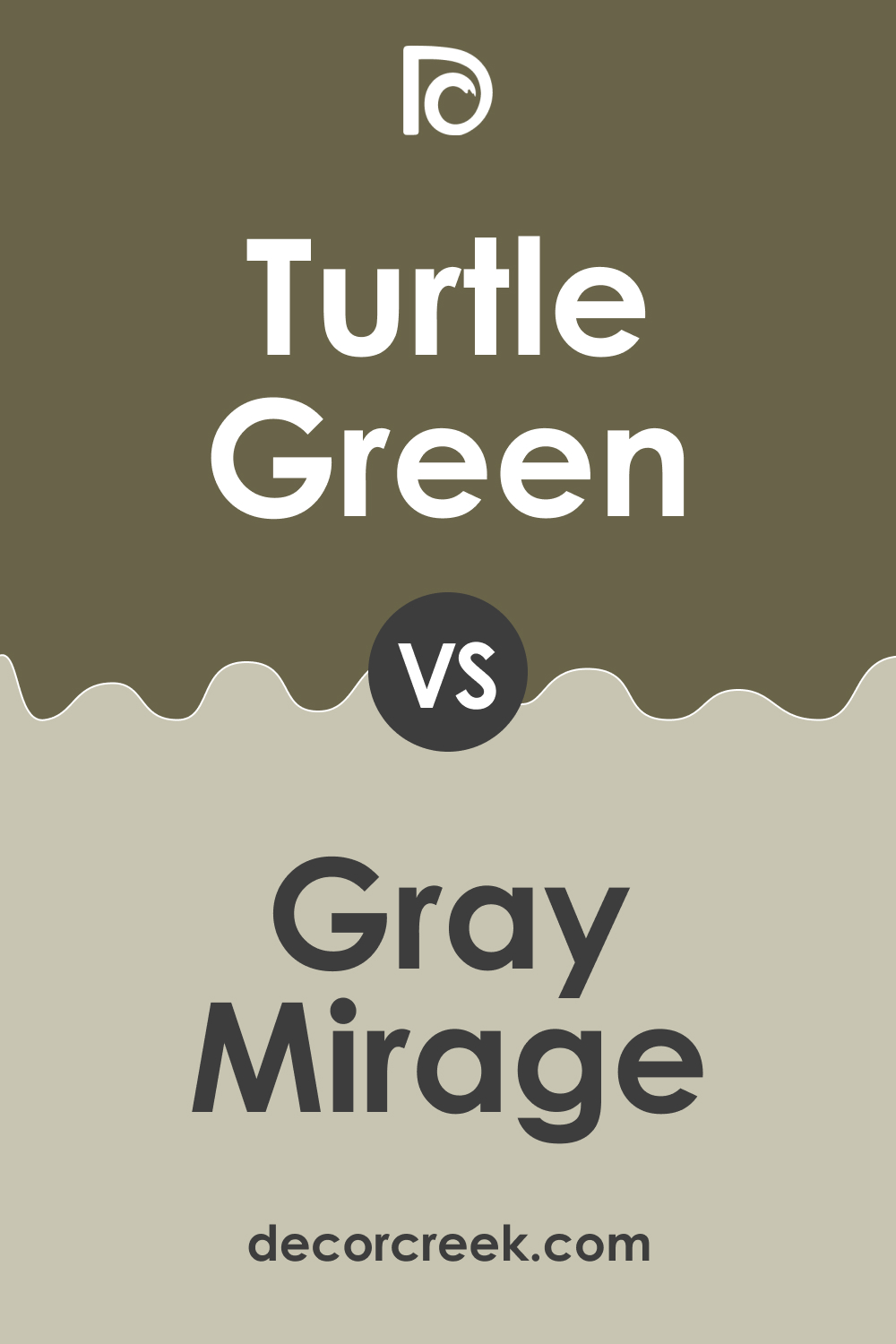
Conclusion
Color comparison is more than just a visual exercise; it’s about understanding the emotions, vibes, and stories each hue narrates. Turtle Green 2142-20, with its versatility, finds both contrasts and complements in various shades. Whether you’re aiming for a monochromatic scheme or seeking harmony through diverse colors, understanding each shade’s essence is key.
Remember, the beauty of design lies not just in individual elements but in how they come together cohesively.
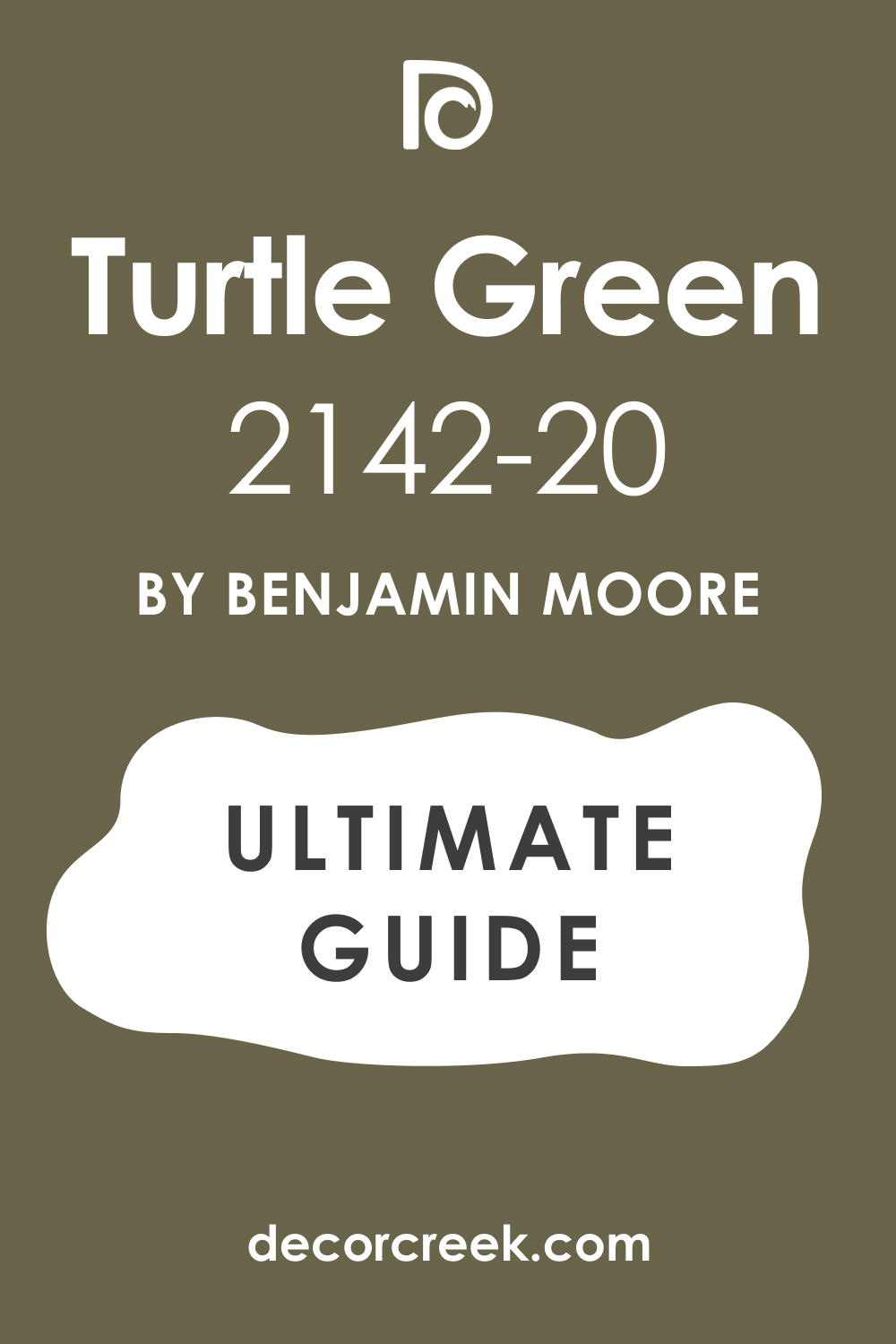
Ever wished paint sampling was as easy as sticking a sticker? Guess what? Now it is! Discover Samplize's unique Peel & Stick samples.
Get paint samples
